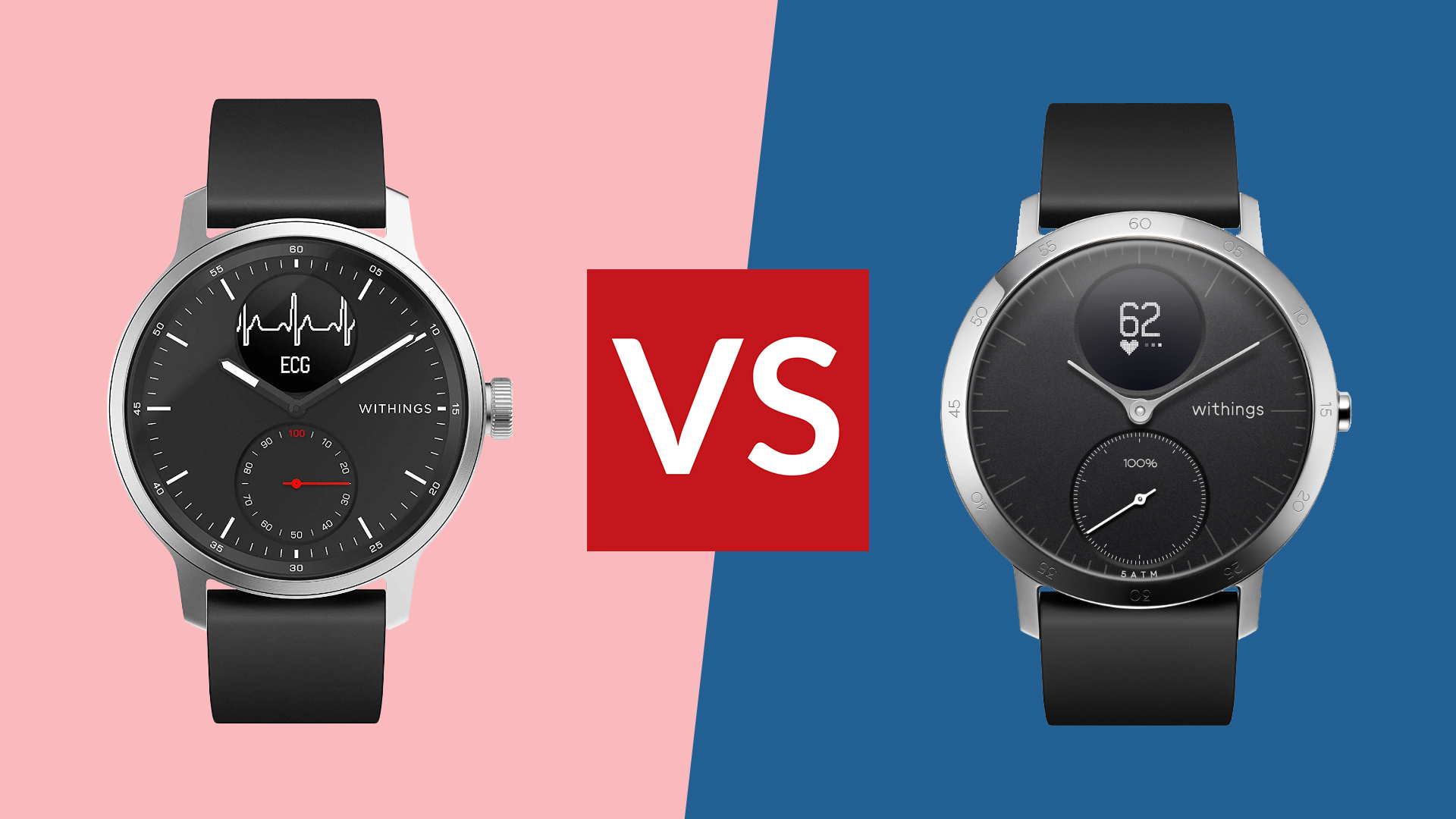

Withings is a French technology firm that was briefly owned by Nokia and is now back in the hands of its founder with a mission to make the best hybrid smartwatches on the market.
Although it also makes smart scales, a sleep tracker and other health and fitness devices, Withings is best known for its watches. In this article, we will be comparing two of its best models, the ScanWatch and the Steel HR.
Both are two of the best hybrid smartwatches, instead of fully-fledged smartwatches, owing to them having physical dials and only a small and simple digital display. But don’t let their aesthetic simplicity fool you, because under those analogue dials sits a whole load of tech.
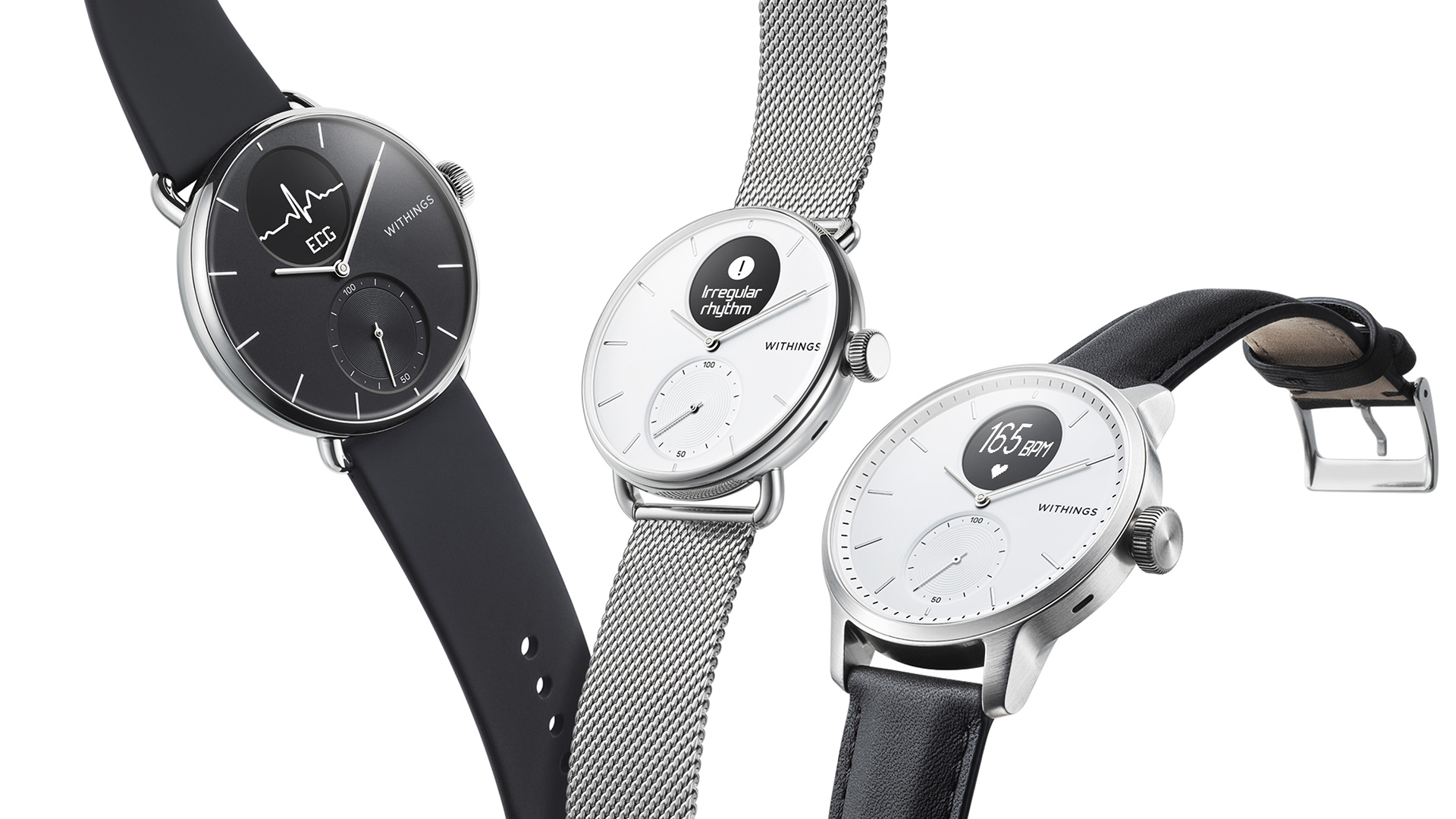
Withings ScanWatch vs Withings Steel HR: Hardware and design
Even since the original Activité arrived back in 2014, Withings has built a solid reputation for making hybrid watches that are as smart as they are beautiful. And while extra dials, complications, sensors and functions have been added over the years, both the ScanWatch and Steel HR retain the good looks of the original.
Both of these watches are available in two case sizes. The Steel HR is the slightly smaller of the two, with case diameter options of 36 and 40mm, while the ScanWatch is offered in 38 and 42mm options.
For both watches, the two sizes are designed differently. The smaller of each has a slimmer bezel, and the larger Steel HR also adds second markers from five to 60 around the circumference of the bezel. All four watches have cases made from stainless steel, with the 40mm Sport version of the Steel HR being an exception with its stealthy anodized black case.
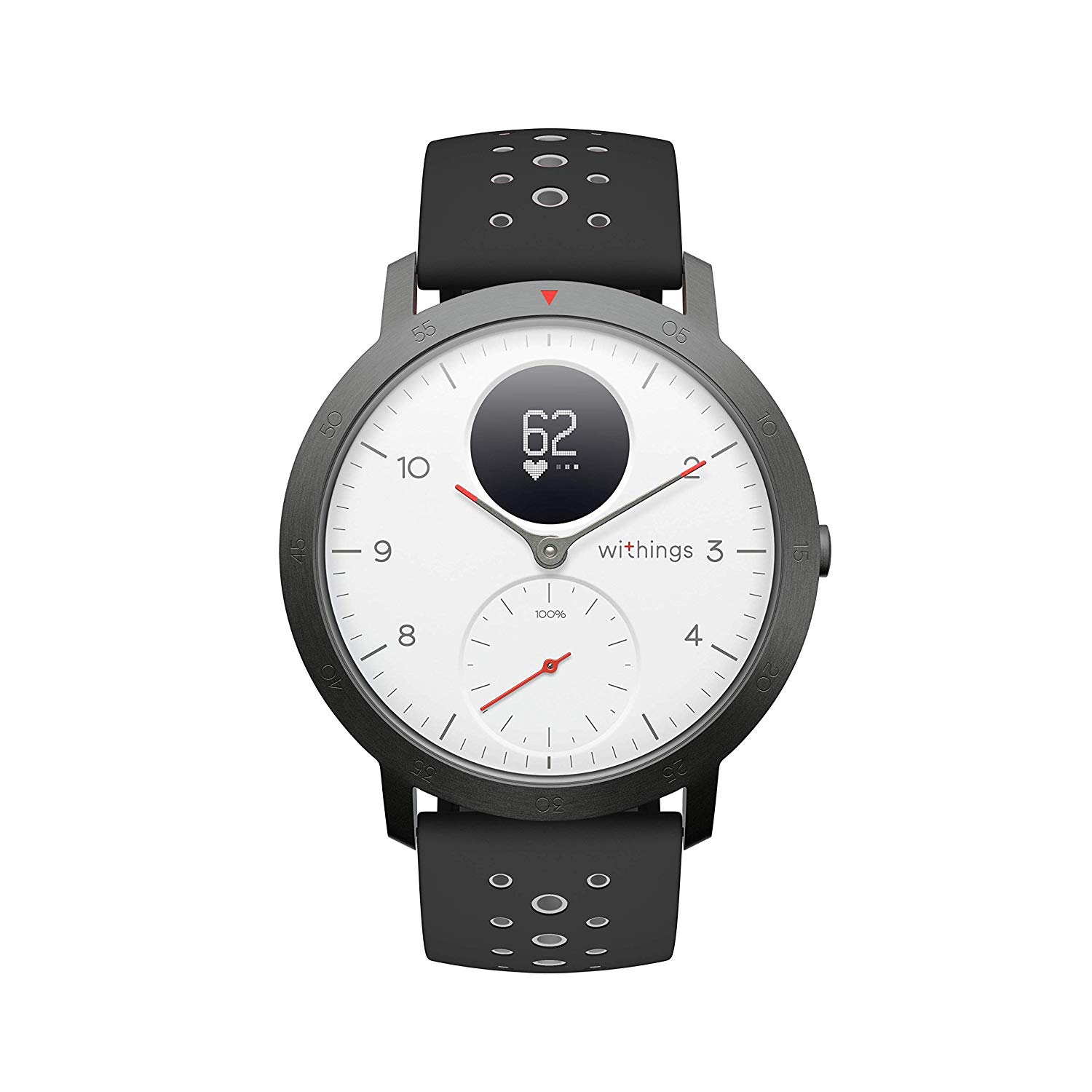
Another stand-out option is the 36mm Steel HR, which can be optioned with a rose gold-coloured stainless steel case. Pair this with a navy blue leather strap and you have a seriously stylish smartwatch on your wrist.
Sign up to the T3 newsletter for smarter living straight to your inbox
Get all the latest news, reviews, deals and buying guides on gorgeous tech, home and active products from the T3 experts
All of these watches have industry-standard lug bars with quick-release lugs, so the straps can be swapped out for any other you fancy, or one of the additional straps sold by Withings itself.
Both watches are offered with black or white dials and both have a traditional dial, with a circular digital display and a second dial sat at the 12 and six o’clock positions respectively. The sub-dial is used to show what percentage of your daily step target you have completed, and the digital display can cycle through various metrics with a press of the crown, and be used as a timer and alert you to notifications and calls on your phone. The watches also vibrate to signal an incoming call or alarm.
A key difference is how all versions of ScanWatch are protected by scratch-resistant sapphire glass, while the Steel HR uses regular glass. All of these watches are water-resistant to five atmospheres, so can be used while swimming but not diving or doing water sports.
The long and the short of it is, both the ScanWatch and Steel HR look great (to our eyes, at least) and are offered in a range of finishes to help you find the perfect watch for your personal style.
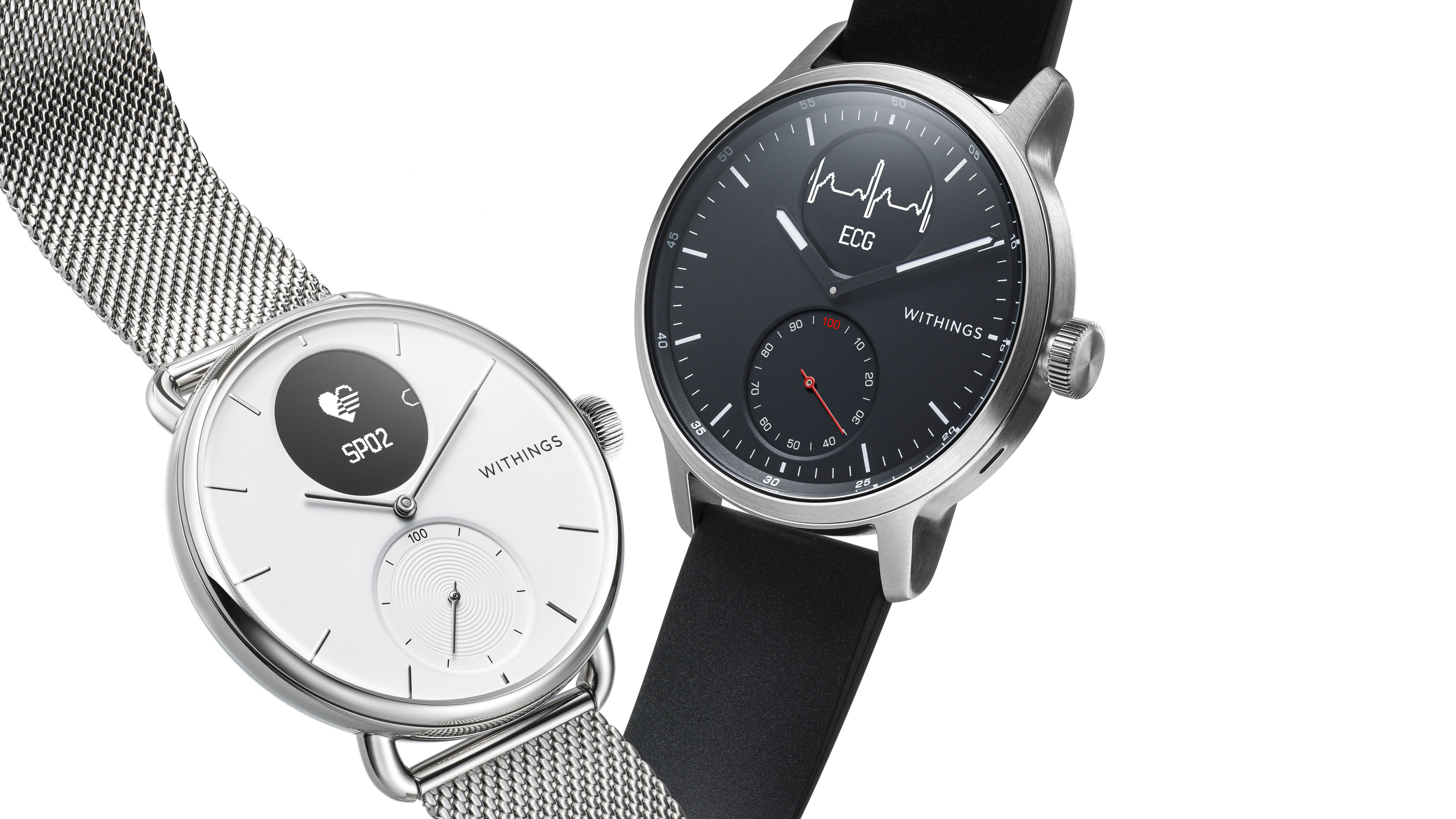
Withings ScanWatch vs Withings Steel HR: Health, sleep and fitness tracking
With its higher price, the ScanWatch is the current flagship of the Withings portfolio, and as such it has the most features. Because hybrid watches don’t have the big touchscreen display of an Apple Watch or Samsung Galaxy Watch, these features are almost all focused on health and fitness.
Claimed (by Withings, at least) to be the world’s most advanced health wearable, the ScanWatch has a heart rate monitor that works 24/7, medical-grade ECG capabilities, an oximeter for SpO2 measurements and respiratory monitoring, and constant activity tracking.
The latter includes the automatic detection of walking, running, cycling and swimming, plus a dedicated workout mode with over 30 sports and exercises to pick from. Connected GPS means the ScanWatch uses your smartphone’s GPS to track the route and distance of outdoor runs.
The cheaper Steel HR also has constant heart rate monitoring and automatic activity tracking, but misses out on the ECG and oximeter of the ScanWatch. It also has Connected GPS, maximum oxygen consumption (VO2 Max) estimation, and the ability to record a wide range of sports, exercise and activities like dancing, hiking, martial arts and weightlifting.
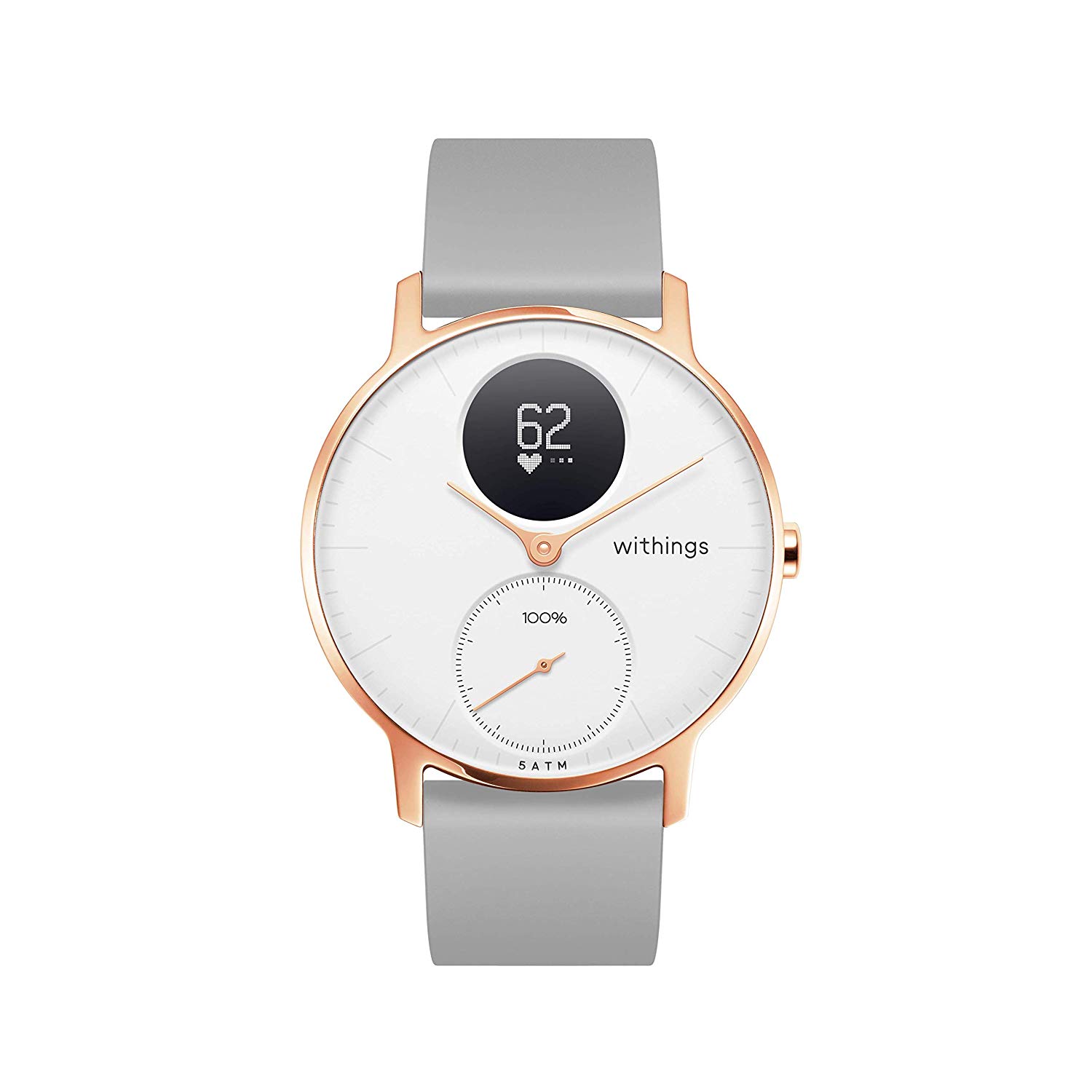
Both watches have advanced sleep tracking, using their heart rate monitors and accelerometers to log your sleep duration, regularity and depth, plus interruptions, and the amount of time it took to fall asleep at night and get up in the morning. A smart alarm can be set, designed to wake you up when you are least asleep within a set time of your regular alarm. The ScanWatch goes a step further with sleep tracking, using its Respiratory Scan feature to track breathing disturbances during the night, which if common could be a sign of sleep apnea.
All of the data collected by each watch is sent via Bluetooth to the Health Mate smartphone app (free for iOS and Android). The watches also work with Strava for tracking your running and cycling, if that’s your preferred exercise app.
Withings ScanWatch vs Withings Steel HR: Battery life
Most hybrid watches have excellent battery life compared to their smartwatch cousins. Withings says the rechargeable battery of the ScanWatch can last for up to 30 days during normal use, plus an additional 20 days in power-reserve mode, which limits the watch to only show the time and track activity. Charging the ScanWatch to 80% takes one hour, and from zero to 100% takes two hours.
The Steel HR is similarly impressive, with a claimed 25 days of normal use per charge, or up to five days when in the battery-intensive workout mode, plus an additional 20 days when in power-reserve mode. Both watches charge via a magnetic dock attached to a USB cable.
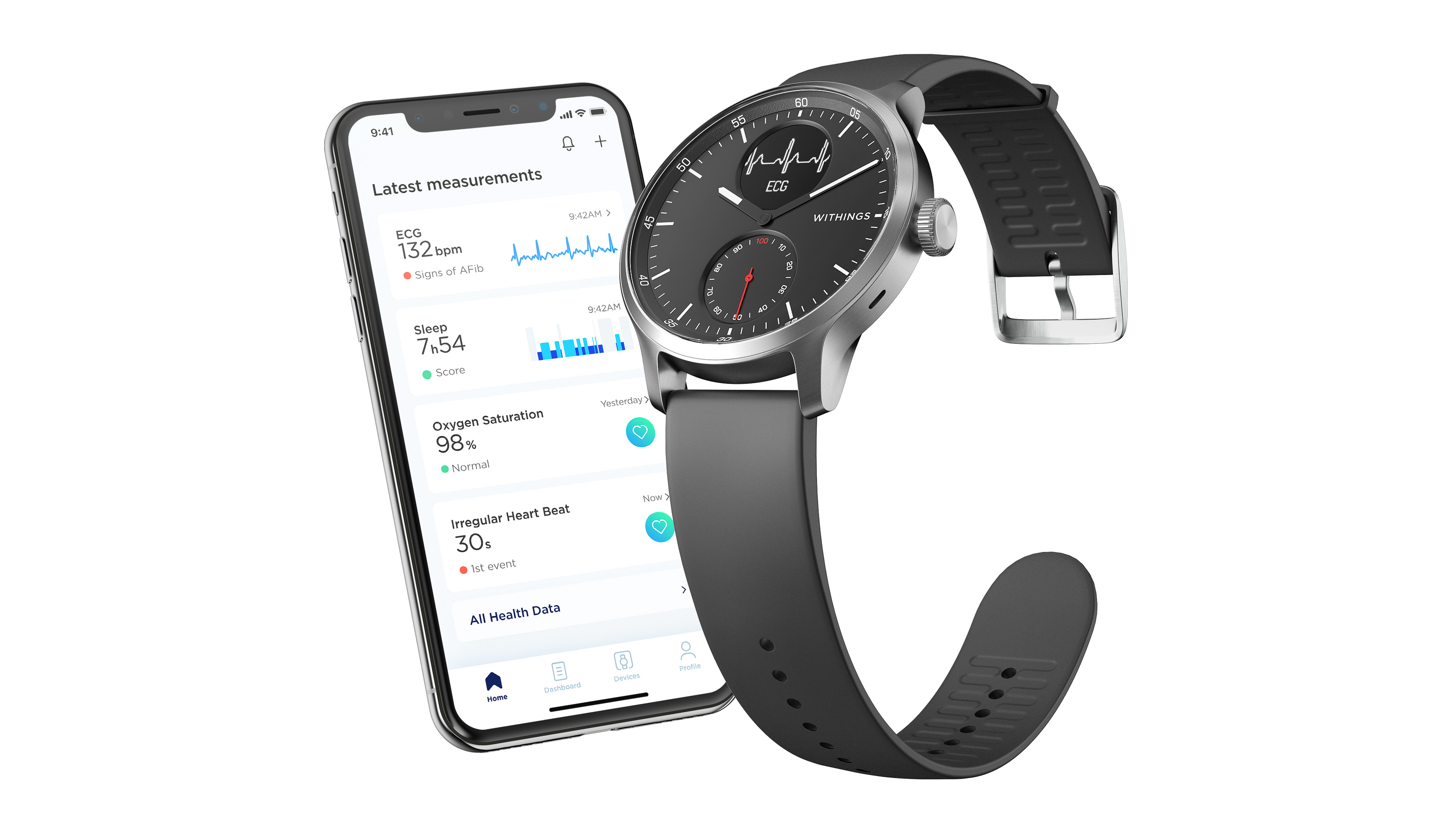
Withings ScanWatch vs Withings Steel HR: Price
Since Brexit, Withings prices in the UK have been somewhat unusual. This is because they are now shown before the addition of VAT at 20%. As a result, the ScanWatch starts at £208.29 before tax, rising to £233.89 for the 42mm model.
The Steel HR starts at £141.63 for the 36mm, rising to £166.63 for the 36mm rose gold model, and £158.29 for the 40mm Sport model.
The key differences between the two are their size and design, battery life (although the difference here is minimal), and the ScanWatch's additional ECG function and monitoring of blood oxygenation.
Liked this?
- Withings ScanWatch review
- Best hybrid smartwatches: striking a balance between smarts and style
Alistair is a freelance automotive and technology journalist. He has bylines on esteemed sites such as the BBC, Forbes, TechRadar, and of best of all, T3, where he covers topics ranging from classic cars and men's lifestyle, to smart home technology, phones, electric cars, autonomy, Swiss watches, and much more besides. He is an experienced journalist, writing news, features, interviews and product reviews. If that didn't make him busy enough, he is also the co-host of the AutoChat podcast.

